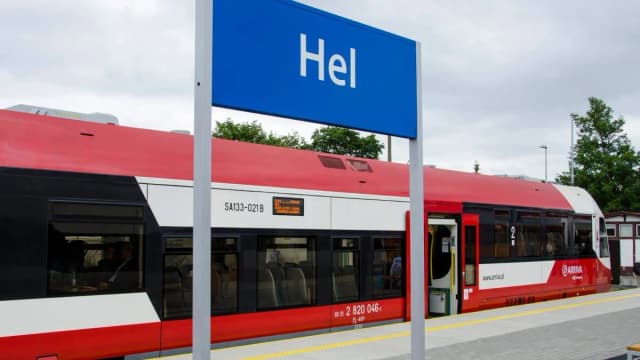
Jak szukać bursztynu na plaży? Kompletny poradnik

Jastarnia czy warto? Odkryj ukryte skarby i spokojny relaks.
Jastarnia czy warto? Sprawdź, co oferuje ta malownicza miejscowość – piękne plaże, lokalne atrakcje i wyjątkowy relaks przez cały rok.

Jak dostać się na Hel - najtańsze i najwygodniejsze opcje podróży
Planujesz podróż na Hel? Sprawdź, jak dostać się na Hel najtańszymi i najwygodniejszymi opcjami transportu, aby cieszyć się bezstresowym wypoczynkiem.

Ile jedzie pendolino z Warszawy do Gdańska? Sprawdź czas przejazdu
Ile jedzie Pendolino z Warszawy do Gdańska? Sprawdź czasy przejazdu i wybierz najszybszą opcję podróży już dziś!

Co robić w Karwii w razie niepogody? Sprawdź atrakcje dla rodzin
Znajdź najlepsze atrakcje w Karwii, które umilą czas rodzinie w razie niepogody. Sprawdź, co robić w Karwii w deszczowe dni!
Co zwiedzić w Kołobrzegu: najważniejsze atrakcje i ciekawe miejsca
Szukasz, co zwiedzić w Kołobrzegu? Sprawdź najważniejsze atrakcje, ciekawe miejsca i lokalne wydarzenia, które umilą Twój pobyt nad morzem!


Jak wygląda hel? Zaskakujące właściwości i wygląd helu w naturze
Jak wygląda hel? Poznaj jego zaskakujące właściwości, zastosowania oraz unikalny wygląd w stanie gazowym, ciekłym i stałym w naturze.

Co zwiedzić w Jastarni: najciekawsze atrakcje, które musisz poznać
Zastanawiasz się, co zwiedzić w Jastarni? Sprawdź najciekawsze atrakcje, plaże oraz lokalne tradycje, które uczynią Twój pobyt niezapomnianym!

Jastarnia co warto zobaczyć: ukryte skarby, które musisz poznać
Jastarnia co warto zobaczyć? Poznaj najważniejsze atrakcje, ukryte skarby oraz piękne przyrodnicze trasy, które zachwycą każdego turystę.

Jak dojechać z Gdańska na Hel pociągiem - najważniejsze informacje i ceny
Planujesz podróż? Sprawdź, jak dojechać z Gdańska na Hel pociągiem, poznaj dostępne połączenia, czasy przejazdu i ceny biletów.

Gdzie zaparkować w Władysławowie? Najlepsze opcje parkingowe i porady
Szukasz, gdzie zaparkować w Władysławowie? Sprawdź najlepsze opcje parkingowe, w tym darmowe miejsca i praktyczne porady dla turystów.

Ile wcześniej można kupić bilet PKP, aby zaoszczędzić na podróży?
Ile wcześniej można kupić bilet PKP? Sprawdź, jak zarezerwować bilety, aby zaoszczędzić na podróży krajowej i międzynarodowej.
Partnerzy naszej strony